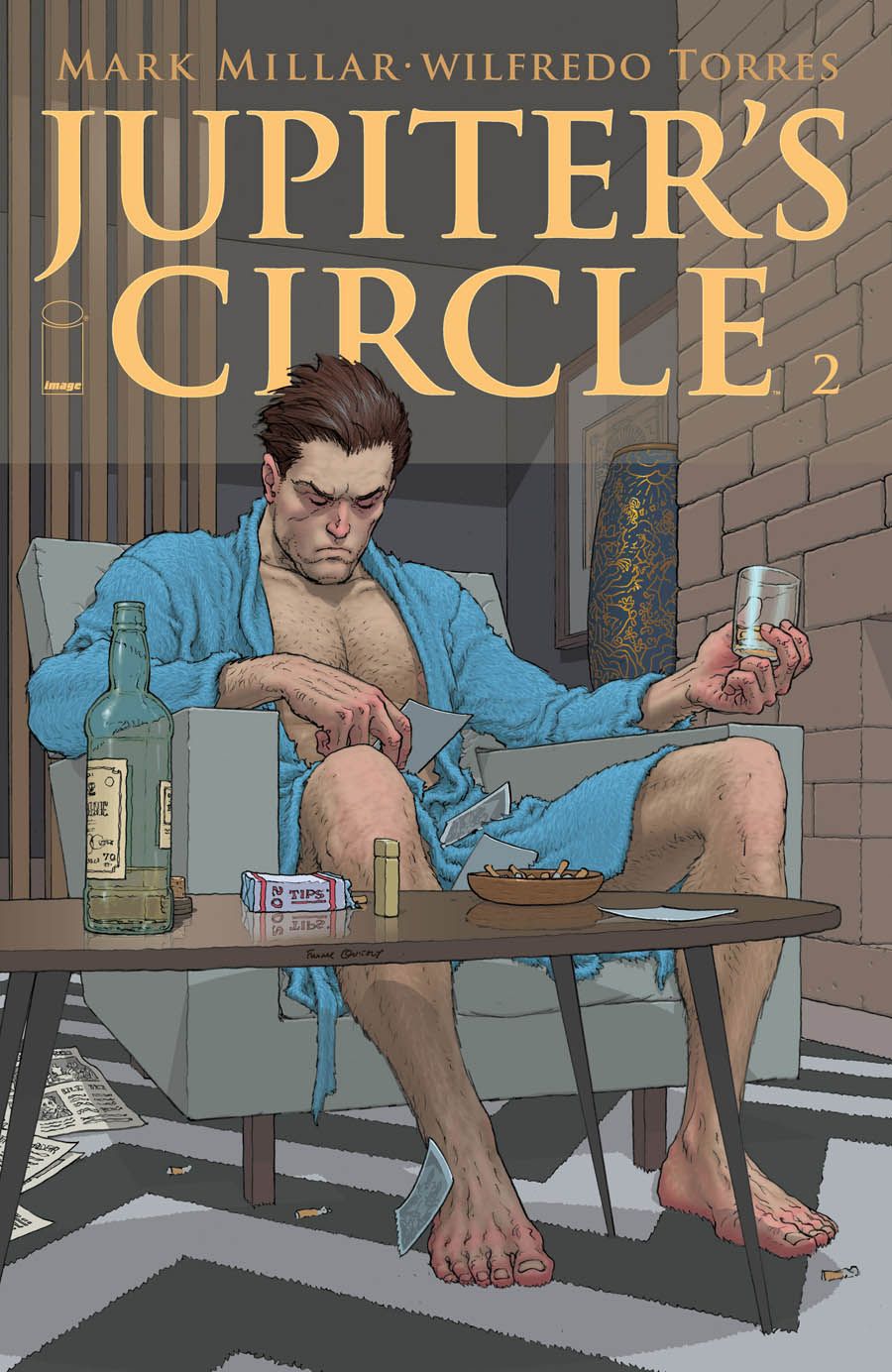We're two issues into "Jupiter's Circle," the prequel series to "Jupiter's Legacy," and I'll admit that I'm genuinely surprised. It would have been easy for Mark Millar and Wilfredo Torres's comic to tell a bleak and grim story involving the team going up against J. Edgar Hoover. However, even when things get truly bad, there's still a light at the end of the tunnel in "Jupiter's Circle" #2.
For someone who made his career in no small part on darkly-themed comics, it's nice to see Millar writing a comic where things can work out well in the end. Blue-Bolt juggles his superhero career and being a closeted gay man in 1959, which is shown to be a struggle because society makes him keep the secret; in response to Hoover's blackmail, the idea of coming out is brought up, and Blue-Bolt notes that it would destroy his career as a surgeon. In many ways, Blue-Bolt is put in a position where there's no simple way out; either he betrays the remainder of his teammates, or his own life is torpedoed (and certainly his time as Blue-Bolt would also come to an end, in addition to his public life).
What makes "Jupiter's Circle" #2 stand out is that Millar gets to have his cake and eat it too, so to speak. Blue-Bolt's decision to end his own life is that awful, bleak moment where he feels there are no other paths. At the same time, Millar still manages to squeak out a happy ending for all parties involved. It works not only because of how Blue-Bolt gets to survive, but in that some of his teammates are not only supporting him but instrumental in his survival, namely Fitz and George. For a comic set in a time when not all would be so welcoming to Blue-Bolt after discovering that he's gay, it's nice to see that at least some of the other characters are still welcoming to their friend. (At the same time, the fact that not all of the other five superheroes are so on board keeps it realistic and believable in that manner.) It's a surprisingly upbeat ending from a writer who too often goes in the other direction.
Torres's art is about as far as one can get from co-creator Frank Quitely's, and that's a smart thing. Not only does it keep Torres from feeling the need to try and ape Quitely, but this cleaner and simpler art style fits well with the time period in which "Jupiter's Circle" is set. It's a slightly simpler, more carefree time, and Torres's crisp and clean art signifies that. Don't mistake this for saying that his characters aren't well-drawn or expressive, though; I love how great all of them look in both civilian and superhero guises. There's a careful attention in characters' anatomy, poses and body language. When they're hanging out at the bar, for example, there's no actual dialogue (just some narration) and it doesn't need it. You can tell exactly what's going on just by how they're reacting to one another; it's the sign of a good artist. I also love the late-'50s fashions on display here; Torres has clearly done his research as he draws them in a stylish manner for the times. Add in some clean, solid colors from Ive Scorcina and this is a handsome looking comic.
"Jupiter's Circle" could have easily been a throwaway comic, an unnecessary prequel. Two issues in, and "Jupiter's Circle" is quickly becoming a must read thanks to Millar and Torres. This isn't just an attempt to fill the publishing gap while "Jupiter's Legacy" is on hiatus; this is a fun and entertaining comic in its own right. I'm definitely on board for more.

